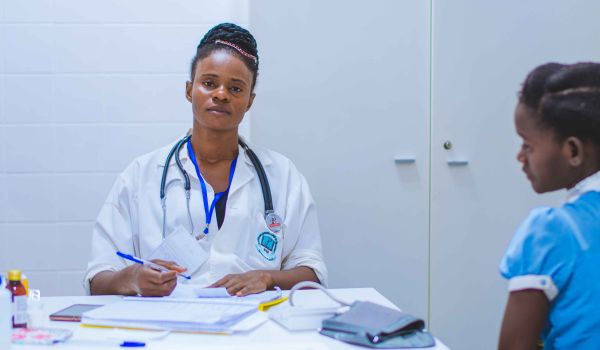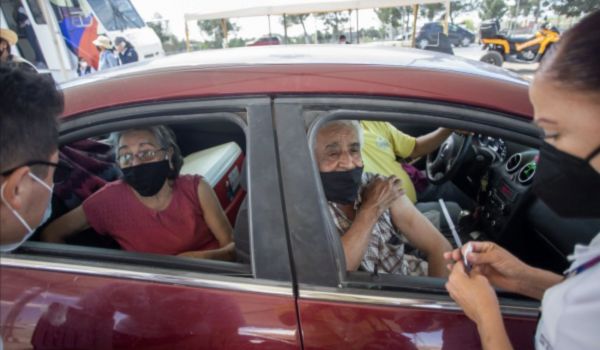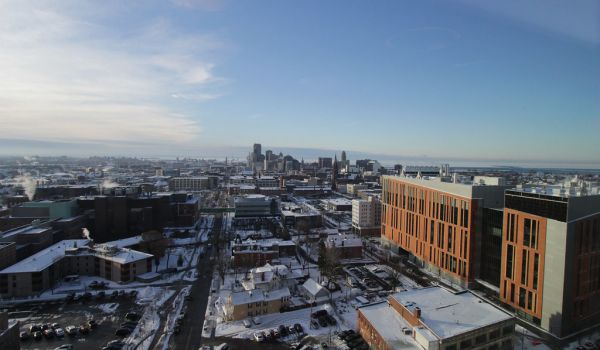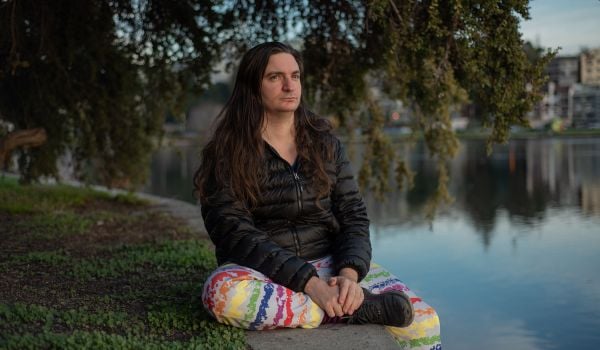Starting from Ferry Circle, on Buffalo’s West Side, take a walk southwest down Massachusetts Avenue and you’ll notice the community gardens, rain gardens, Growing Green Urban Farm, a park that was once a broken-down, unkempt, and dangerous eyesore, and shimmering solar panel arrays here and there. Each bright spot has at least one story behind it of someone who lives in that neighborhood who helped build it.
You’re in Buffalo’s Green Development Zone. It’s a far cry today from the vacant or abandoned properties that pockmarked the 25-block area more than 15 years ago. That’s when PUSH Buffalo started buying up the first of more than a hundred vacant lots in the neighborhood, including many that were caught up in the financial crisis of 2008-2009 (PUSH stands for People United for Sustainable Housing).
Over the past 15-plus years, PUSH Buffalo estimates it has brought in more than $60 million of investment to those hundred-plus lots, most of which became permanent low-income housing. The organization is now developing new low-income housing in the area, as well as a new community facility to house a workforce training program focused on green jobs.
Residents around the neighborhood have invested even more into their own homes and businesses, says Rahwa Ghirmatzion, who has been with the organization since 2013 and became its executive director in 2018. It’s a natural response, she says, when you give residents real power to decide what investments their neighborhood needs and include them in the jobs that development brings, as PUSH Buffalo has been doing all along.
“There’s successes and pride that comes back to a community, having been part of the decision-making to address the challenges in the community by bringing resources there,” says Ghirmatzion. “[Compared to years ago], people are reinvesting in little ways into their homes, planting gardens and other little actions. That kind of pride you can’t put a price on.”
With the City of Buffalo receiving $331 million in direct funding from the American Rescue Plan Act, Ghirmatzion believes the city has an opportunity to take that lesson to heart and support other neighborhoods in to go through the same community-led process PUSH Buffalo went through for the Green Development Zone. But, she says, that’s not even close to what’s happening. And across the country, so far, similar stories are playing out in other cities that are figuring out what to do with ARPA relief dollars.
“What I think is happening right now is business as usual, which is an administration that lacks creativity, imagination, boldness and courage to address what’s happening in Buffalo,” Ghirmatzion says. “And it’s not strategic at all toward addressing any of our historical systemic issues.”
Passed in March, the American Rescue Plan included $130.2 billion in “fiscal recovery aid” for more than 30,000 local governments across the country.
It’s an unprecedented amount of federal aid going directly to local governments, in terms of the size of a one-time allocation, the number of eligible governments, and the discretion given to those governments for how to spend those dollars, says Amanda Kass, associate director of the Government Finance Research Center, University of Illinois at Chicago.
It’s so unprecedented, Kass says, that one of the challenges for smaller governments in particular has been their own in-house capacity to determine exactly where the line is between what counts as eligible spending and what doesn’t count. A lot of the smaller governments don’t have much experience working with federal dollars, and the federal dollars they’ve received in the past usually come with pretty clear and established rules around what they can spend it on.
“What is the capacity within a government to figure those things out?” Says Kass. “We’re talking about communities of various sizes, do they have lawyers to review this, what is their process to figure that out, how are they making decisions about how to use this money, and how are they getting information about Treasury’s rules around this money?”
The rules around ARPA fiscal recovery aid aren’t even finalized yet. The Department of Treasury has already disbursed around half of those fiscal recovery aid dollars under an interim final rule that may still change based on comments received over the summer (the comment deadline was July 16).
At least one fortunate bit of clarity has come from Treasury — local governments can’t use fiscal recovery aid to pay off any municipal bonds or other debt. Back in April, Chicago’s chief financial officer urged the city to take nearly half the city’s $1 billion in fiscal recovery aid to repay debt owed to JPMorgan Chase. That can’t happen now under Treasury’s interim final rule.
Beyond that, of the five broad categories, some are more concrete than others. On the more concrete end of the spectrum, there’s “support public health expenditures, by, for example, funding COVID-19 mitigation efforts, medical expenses, behavioral healthcare, and certain public health and safety staff,” or “premium pay for essential workers,” or “invest in water, sewer or broadband infrastructure.”
At the less concrete end is “address negative economic impacts caused by the public health emergency, including economic harms to workers, households, small businesses, impacted industries, and the public sector.”
Somewhere in the middle is “replace lost public sector revenue.” While it seems concrete enough at face value, Kass says it would be interesting, albeit difficult, to look back later and gauge what cuts might have been avoided thanks to these dollars. In other words, if a city uses fiscal recovery aid dollars to make up for declines in sales or income tax due to the economic fallout from the pandemic, does that make it less likely to cut budgets for parks or social services relative to pre-pandemic local government spending levels on those areas.
Unlike the federal government, local and state governments have to cut back spending when revenues fall unexpectedly below expenditures. Those cuts, in turn, worsen the recession that caused them. Marquette University political scientist Philip Rocco calls it a “death trap.”
Kass, who co-authored a recent blog post with Rocco on ARPA, believes this program, because of its reach and flexibility, has the potential to set a precedent for an ongoing program of automatic federal aid for state and local governments during a recession. Once all these thousands of local governments have a bit of experience under their belt with navigating this degree of flexibility with federal aid dollars, Kass says, they would all be a bit more comfortable doing it every time there’s a recession.
“They’re building this plane while they’re flying it — building this program during an ongoing crisis, things like how to report to Treasury about their spending. It’s not optimal to be thinking about how to do that in a crisis, but maybe the experience creates infrastructure for having a permanent program like this,” says Kass. “It would be optimal to have a permanent program that turns on during a crisis rather than having to depend on Congress every time.”
Back in Buffalo, Ghirmatzion would like that precedent to include more public input on how to spend relief dollars when they come.
So far, there has been one public meeting of the Buffalo Common Council’s Finance Committee where the general public has had a chance to weigh in on Buffalo’s $331 million in ARPA aid. In late July, Mayor Byron Brown’s office did release a preliminary draft plan featuring 28 different proposals across all of the federal spending categories, including a two-year guaranteed income pilot program.
According to the preliminary draft plan, city policymakers met with “housing services providers, community advocates, public health advocates, and neighborhood leaders” to shape the proposals.
But Ghirmatzion was not impressed with the city’s overall process. “Of Buffalo Common Council members, not a single one of them has done an in-district meeting to discuss ARPA dollars,” she says.
In other cities, too, there’s been unrequited demand for broader and deeper public participation in determining how to spend ARPA fiscal recovery aid.
The City of Detroit touts having hosted 65 public meetings between May and June, with 3,838 meeting participants and 739 responses to an online survey that helped it craft a plan to spend its $826 million in fiscal recovery aid from ARPA. But not everyone in Detroit was satisfied with the city’s community engagement.
“I’ve been extremely concerned about the speed of the process,” says Chase Cantrell, community developer and founder of Building Community Value, a nonprofit that trains Detroit residents to become community developers.”
“Public input was only accepted for six weeks, and even the meeting and survey process wasn’t open-ended,” Cantrell adds. “Residents were only given the choice of selecting priorities within predetermined buckets. City Council has already approved $50 million in spending within a month, 30% of which were large contracts for questionable compliance services. We’re just moving at lightning speed, and I fear that our political leaders aren’t providing enough time for resident input or their own proper due diligence.”
There is a certain urgency to get aid dollars out to those who are facing dire situations like evictions, foreclosures, or closing local businesses. But for some of the most urgent needs there are other dedicated federal funding sources like the emergency rental assistance program — only a fraction of which has been disbursed to tenants and landlords due to various stumbling blocks at the state and local levels.
Local governments have until 2024 to decide how to spend fiscal recovery aid money, and two more years after that to actually spend it. That means there is time to be more deliberate and participatory with allocating at least some of those dollars. Milwaukee County’s task force to decide how to spend its $183.6 million just had its first meeting last week. Ghirmatzion would like to see Buffalo take a more deliberate, open approach.
“Put that money aside for a couple of years and be able to dream a little bit bigger, and with a real life example like the Green Development Zone, other neighborhoods could do even bigger things,” Ghirmatzion says. “And it wouldn’t take you 15 years, because you’d have a cheat sheet from the way we’ve done it and we have a whole curriculum designed around the strategies and framework for how to do this.”
There’s also the prospect of going through a neighborhood-by-neighborhood process under a new mayor in Buffalo who comes from the world of grassroots organizing around development. India Walton shocked many observers with her victory in last summer’s Democratic primary election against 15-year incumbent Byron Brown — who is now running a write-in campaign as a last ditch effort to stay in office. The final showdown will be this November’s general election in Buffalo.
Prior to running for mayor, Walton co-founded and served as the first executive director of Fruit Belt Community Land Trust, which has been acquiring city-owned vacant lots for development in a historically Black neighborhood facing gentrification on the east side of Buffalo.
“I feel the likelihood that an incoming Walton administration would very much have a better way of dispersing these dollars,” Ghirmatzion says.
This article is part of The Bottom Line, a series exploring scalable solutions for problems related to affordability, inclusive economic growth and access to capital. Click here to subscribe to our Bottom Line newsletter.

Oscar is Next City's senior economic justice correspondent. He previously served as Next City’s editor from 2018-2019, and was a Next City Equitable Cities Fellow from 2015-2016. Since 2011, Oscar has covered community development finance, community banking, impact investing, economic development, housing and more for media outlets such as Shelterforce, B Magazine, Impact Alpha and Fast Company.
Follow Oscar .(JavaScript must be enabled to view this email address)



_920_613_80.jpg)














